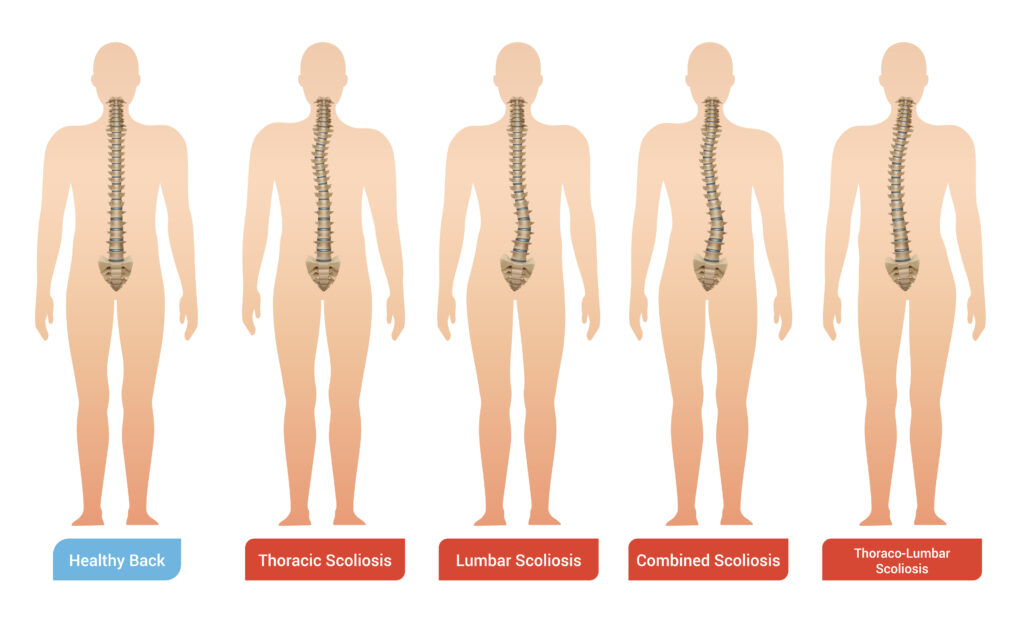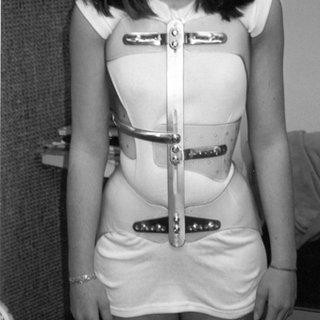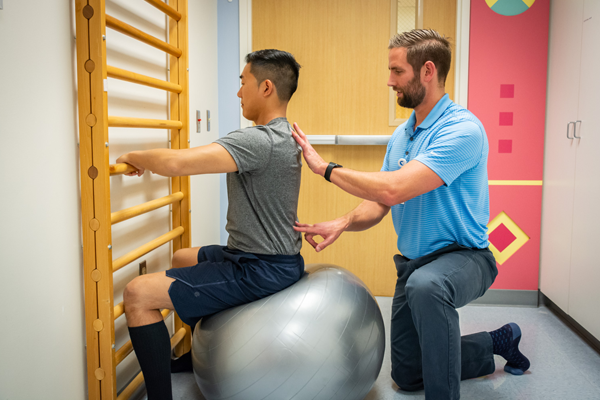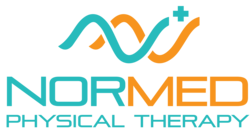Table of Contents
Scoliosis is becoming increasingly common in today’s world, and it is noteworthy that individuals affected by it are getting younger every year. Interestingly, there are non-invasive treatments available that can effectively manage and treat scoliosis.
The SOSORT (International Society on Scoliosis Orthopaedic and Rehabilitation Treatment) has endorsed seven scientifically proven, evidence-based approaches known as PSSE (Physiotherapy Scoliosis Specific Exercises). These approaches have demonstrated their effectiveness in treating scoliosis.

1. Functional Individual Therapy of Scoliosis (FITS) Method
FITS Method was created in 2004 by Marianna Białek and Andrzej
M’hango for the needs of therapy of children with postural disorders, scoliosis and Scheuermann’s disease.
The FITS Method practises the principles of myofascial dysbalance treatment. Therapy begins with improved proprioception, relaxation of shorth, tight hypertonic muscles, then strengthening of weak muscles, to obtain the best conditions for the implementation of corrective patterns and auto correcting the posture.
2. Scientific Exercise Approach to Scoliosis (S.E.A.S)
SEAS stands for Scientific Exercises Approach to Scoliosis, and is a type of physical therapy that focuses on the corrective potential of scoliosis-specific exercises (SSEs).
SEAS employs the use of self-correction techniques performed without the use of equipment, and these techniques are customized to suit each patient’s condition type.
The main goal of SEAS is to make the spine more stable by using scoliosis-specific exercises to trigger neuromotor function to be stimulated by reflexes, postural remodeling, and a more natural body positioning.
3. Barcelona Scoliosis Physical Therapy School (BSPTS)
Barcelona Scoliosis Physical Therapy School (BSPTS) is a school created to offer education to Physiotherapists in treating patients with scoliosis and other spinal disorders.
It is founded by Elena Salvá, based on classical Schroth Method principles.
BSPTS has evolved paying attention to three spheres of knowledge:
1) Specific knowledge on Scoliosis and other spinal disorders
2) The BSPTS-Concept by Rigo. Based on four general principles: Threedimensional stable postural correction; Expansion Technique; Muscle activation and Integration.
3) The BSPTS-Technique. Based on different touching formats (feeling format, passive-active format.
4. DoboMed Method
DoboMed Method was founded by Prof. Krystyna Dobosiewicz. She was both a physiotherapist and a physician. Prof. Dobosiewicz was also very familiar with the Klapp’s and Lehnert-Schroth’s methods. It was from these beginnings that she started to create her own approach to the treatment of scoliosis.
The basic aim of this method is to prevent progression and/or decrease the curvature of scoliosis. The second aim is to improve respiratory function. Small, moderate and large curves (idiopathic scoliosis) can all be treated with DoboMed, however the effectiveness of the therapy depends on the curve flexibility and the patient’s compliance.
5. Side Shift
Side shift therapy uses side shift exercise and hitch exercise for the treatment of idiopathic scoliosis. Outcomes of side shift exercise used for the curves after skeletal maturity or used in combination with part-time brace wearing treatment are better than the natural history. Side shift exercise and hitch exercise are useful treatment options for idiopathic scoliosis.
6. Lyon Approach

Lyon Approach practise the Lyon Bracing Management which has evolved since 1947 as a cooperative effort between Pierre Stagnara MD and Bouillat & Terrier. The Lyon management protocol requires curve reduction with a plaster cast for one to four months, after which the brace is moulded and fit. The brace is highly adjustable under the arm design and does not have a superstructure.
Studies show that in order for this bracing management to be fully effective, it requires the patient to wear a plaster cast for at least one month and receive specific physiotherapy training.
7. Schroth Method

The Schroth Method designed and developed by Katharina Schroth, she herself had scolisis. It is a non-invasive treatment for scoliosis that uses specific exercises that are based on a patient’s unique spinal curve pattern. The spine is addressed in all three anatomical planes – sagittal, frontal and transverse. The purpose of the method is to create spinal balance and stability by improving body mechanics and spinal stabilisation to prevent further curve progression. Several studies suggest a significant effect on reducing the Cobb angle and improving Quality of Life (QOL) in adolescents with idiopathic scoliosis.
Among all scoliosis-specific exercise approaches, the Schroth method is the most studied and widely used. It uses exercises customized for each patient to return the curved spine to a more natural position. The goal of Schroth exercises is to de-rotate, elongate and stabilize the spine in a three-dimensional plane.
The list of certified Schroth Method practitioners in Malaysia is only 7, and our physiotherapist, Houston Tee is one of them. View the international certified Schroth practitioner here.
To read more on what you should expect during a Schroth Method session, click here.
